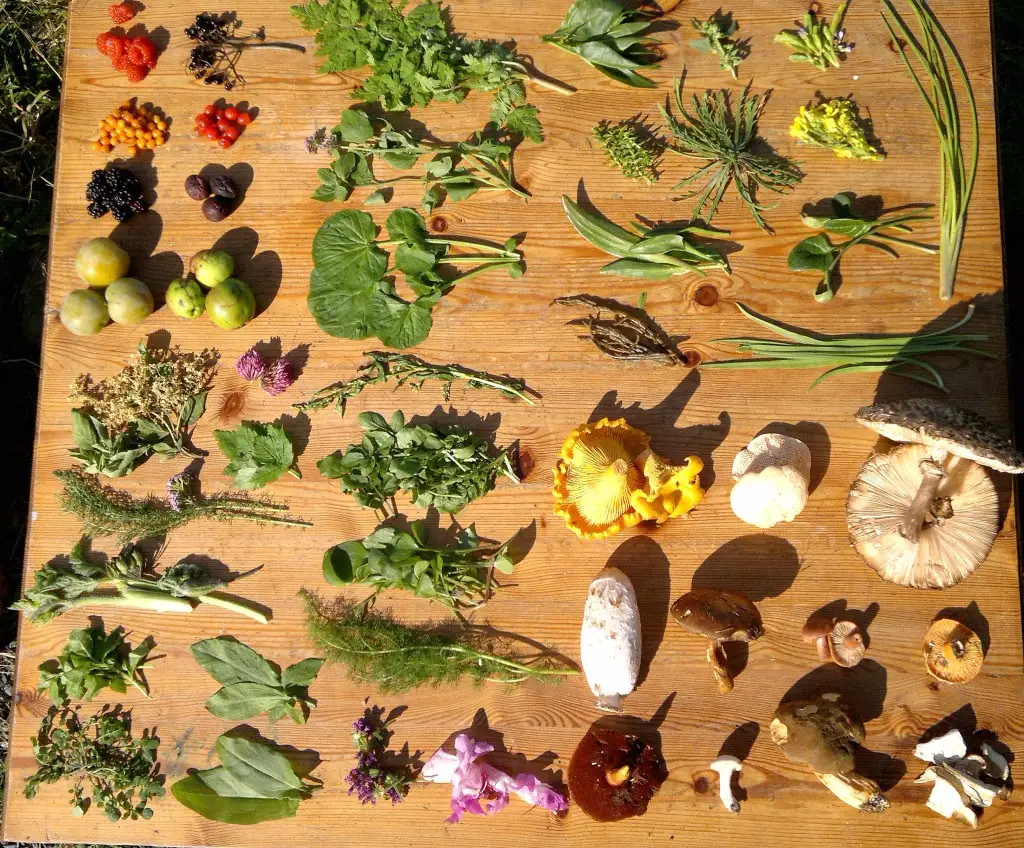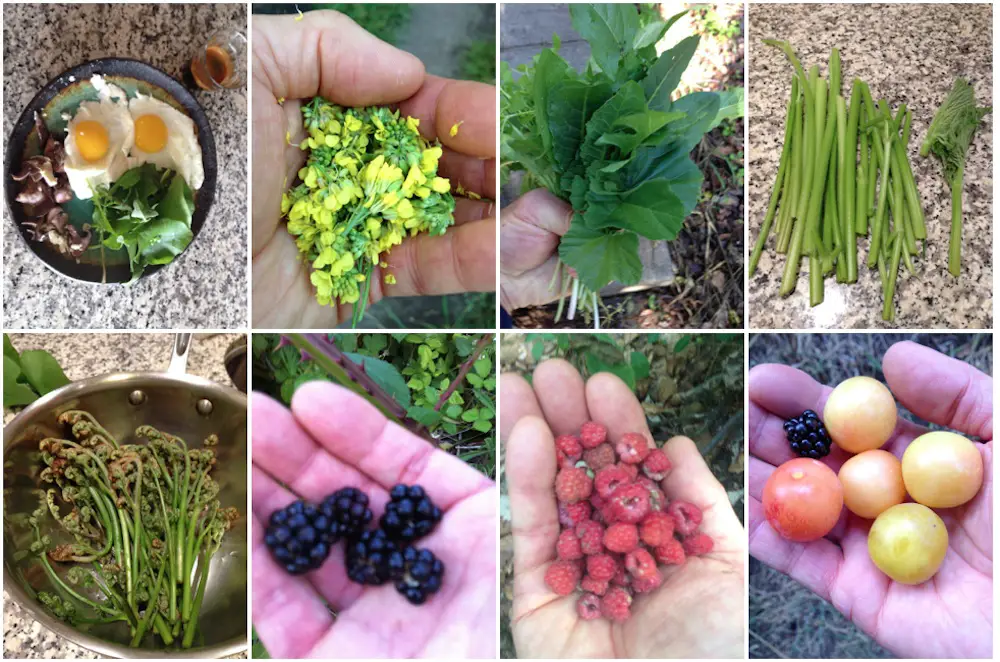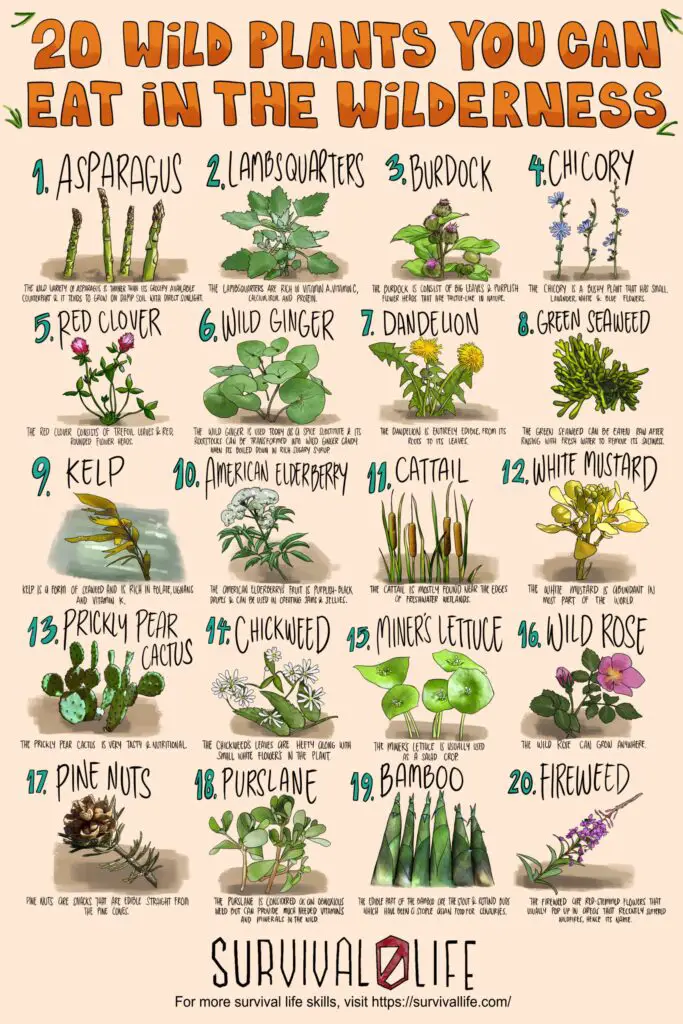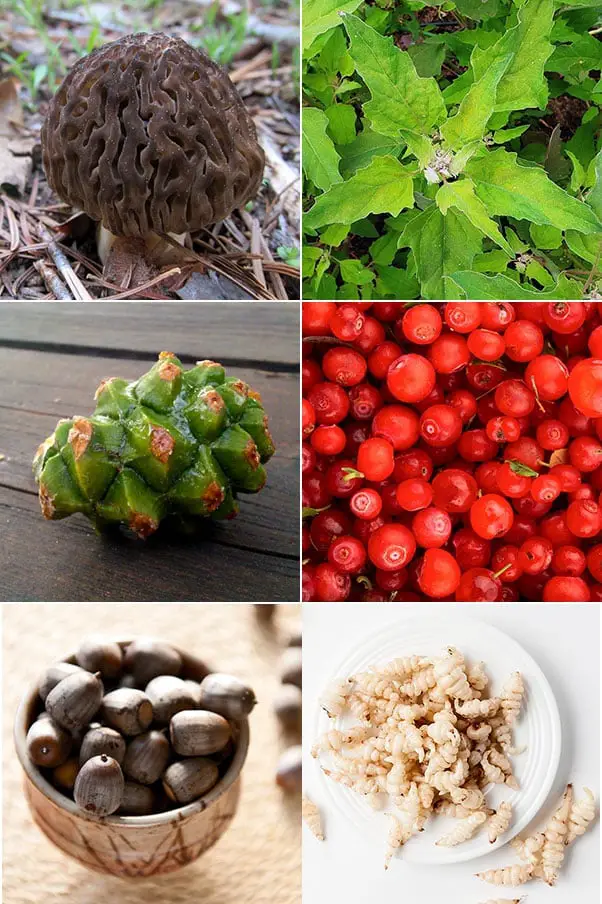Imagine the thrill of exploring the great outdoors, embracing the beauty of nature, and discovering a hidden treasure trove of edible delights. In the article “Wild Edibles: Foraging For Food In The Wild,” you’ll be transported to a world where the wilderness becomes your grocery store. Learn about the diverse range of wild edibles that nature has to offer, from fragrant herbs to succulent berries, and how to safely identify and gather them. Get ready to embark on an adventure filled with delicious surprises and a deeper connection to the bountiful gifts of Mother Earth.
1. Types of Wild Edibles
Types of plants
When it comes to foraging for wild edibles, there are a wide variety of plants that can be found in the wilderness. These plants can include leafy greens such as dandelion greens, lambsquarters, and chickweed, which can be used in salads or cooked as a side dish. Other edible plants include wild garlic, nettles, and wild asparagus, all of which can add unique flavors to your meals.
Types of mushrooms
Mushrooms are another type of wild edible that can be found in various environments. Morel mushrooms, for example, are a highly sought-after delicacy known for their rich and earthy flavor. Other edible mushrooms include chanterelles, porcini, and oyster mushrooms. However, it’s important to note that mushroom foraging requires extensive knowledge and caution, as there are many poisonous mushrooms that can be easily mistaken for edible varieties.
Types of berries
Berries are a sweet and delicious addition to any forager’s basket. Common wild berries that can be found in the wild include blackberries, raspberries, blueberries, and strawberries. These berries are not only a tasty treat but also a great source of vitamins, antioxidants, and fiber. Just be sure to properly identify the berries before consuming them to avoid any potential pitfalls.
Types of nuts
Nuts are another type of wild edible that can be gathered in certain regions. Acorns, for instance, are edible nuts that can be roasted and ground into a flour substitute. Other types of nuts that can be foraged include hazelnuts, walnuts, and chestnuts. Nuts are not only a delicious snack but also a good source of healthy fats and proteins.
2. Identifying Wild Edibles
Knowing the environment
When it comes to foraging for wild edibles, it’s essential to be familiar with the environment in which you’re foraging. This includes understanding the local ecosystem, knowing the types of plants and mushrooms that grow in the area, and being aware of any potential dangers or restrictions. Knowing the environment will help you identify and locate the wild edibles more easily.
Understanding plant characteristics
To safely identify wild edible plants, it’s important to have a solid understanding of their characteristics. This includes studying the shape and color of leaves, flowers, and berries, as well as the overall growth pattern of the plant. Paying attention to these details will help you differentiate between edible plants and poisonous look-alikes.
Learning about mushrooms
Mushrooms can be one of the trickier wild edibles to identify. It’s crucial to invest time in learning about the various types of mushrooms and their distinguishing features. Consider joining a local mycological society or attending workshops to deepen your knowledge. Always be cautious when foraging for mushrooms and double-check your identification with an expert before consuming them.
Recognizing edible berries
When it comes to identifying edible berries, there are a few key features to look out for. Edible berries typically have a vibrant color, a recognizable shape, and grow on non-prickly bushes or vines. Take the time to familiarize yourself with the specific characteristics of each edible berry to ensure safe foraging.
Identifying edible nuts
Identifying edible nuts involves understanding the characteristics of different nut species. Pay attention to the shape, size, and texture of the nuts. It’s also essential to research whether any preparation is required to remove toxins or tannins from certain nuts before consuming them. Proper identification is crucial to avoid any negative health effects.

3. Safety Precautions
Research and knowledge
Before venturing into the wild to forage for wild edibles, it’s crucial to do extensive research and acquire the necessary knowledge. This includes knowing which plants and mushrooms are edible, understanding the potential risks and dangers, and being familiar with any local regulations or restrictions. The more you know, the safer and more successful your foraging experience will be.
Avoiding poisonous plants
One of the most critical safety precautions when foraging for wild edibles is the ability to identify and avoid poisonous plants. Some plants may closely resemble edible varieties but can have toxic or even deadly effects if ingested. Take the time to thoroughly research and study the distinguishing features of poisonous plants in your region to minimize any risks.
Proper use of tools
When foraging, it’s important to use the right tools and use them properly. A good knife or multi-tool can be handy for cutting plants or mushrooms, but be sure to handle them with caution and follow proper safety guidelines. Using the wrong tools or mishandling them can lead to accidents and injuries, so it’s essential to be mindful and careful.
Protective clothing and gear
Foraging often involves navigating through dense vegetation, potentially encountering insects or thorny plants. Wearing appropriate protective clothing, such as long sleeves, pants, and sturdy footwear, is vital to minimize any potential risks. Additionally, consider using gloves to protect your hands and carrying a first-aid kit for any minor injuries that may occur during your foraging adventures.
Foraging with a group
Foraging with a group can provide an extra layer of safety. Having multiple sets of eyes to identify wild edibles and share knowledge can help ensure accurate identification and minimize the risk of consuming something harmful. Additionally, having company can enhance the overall experience and make foraging more enjoyable.
4. Best Practices for Foraging
Observe before picking
Before picking any wild edibles, take the time to carefully observe and examine the plant or mushroom. Ensure that you have correctly identified the species and that it is in good condition. Avoid picking plants or mushrooms that show signs of disease or decay, as these can pose health risks.
Leave no trace
When foraging, it’s important to practice Leave No Trace principles. This means minimizing your impact on the environment by avoiding unnecessary damage, not picking more than you need, and being mindful of fragile habitats. By leaving the wild as you found it, you help preserve these areas for future foragers and the ecosystem as a whole.
Sustainable foraging
Foraging sustainably involves harvesting wild edibles in a way that allows the species to replenish and thrive. Avoid overharvesting or taking too much from a single patch, as this can negatively impact future growth. Instead, practice selective harvesting and learn to identify plants or mushrooms that can be sustainably foraged without harming their populations.
Seasonal considerations
Different wild edibles have their peak seasons, and it’s important to consider this when foraging. Understand the best times to find specific plants, mushrooms, berries, or nuts, as this will increase your chances of finding abundant and healthy specimens. Additionally, familiarize yourself with any seasonal restrictions or regulations that may be in place.
Respecting private property
Always obtain permission before foraging on private property. Trespassing is not only illegal but also disrespectful to landowners. If you’re unsure whether a specific area is private or public, do some research or reach out to the local authorities to avoid any potential issues.

5. Tools and Equipment for Foraging
Field guides and reference books
Field guides and reference books are invaluable resources for foragers. These books provide detailed information about different species of plants, mushrooms, berries, and nuts, helping you identify and learn more about the wild edibles in your area. Look for guides that are specific to your region and include high-quality photographs or illustrations for accurate identification.
GPS or compass
When exploring unfamiliar areas, a GPS device or compass can be helpful for navigation. These tools can help you mark locations where you find particular wild edibles, making it easier to return to those spots in the future. They can also assist in tracking your routes and preventing getting lost in unfamiliar terrain.
Knife or multi-tool
A knife or multi-tool is a versatile tool that can be useful for cutting through tough vegetation or harvesting mushrooms. Choose a knife or multi-tool with a sharp blade and handle that is comfortable to hold and use. Remember to exercise caution and proper handling techniques to ensure safety while using these tools.
Baskets or bags
Foraging typically involves collecting wild edibles, and having a basket or bag to hold your harvest is essential. Opt for a basket or bag that is sturdy, breathable, and large enough to accommodate your finds without causing damage. Avoid plastic bags, as they can cause plants or mushrooms to sweat and deteriorate quickly.
Water bottle and snacks
Foraging can be a physically demanding activity, so it’s important to stay hydrated and energized. Carry a reusable water bottle and pack some lightweight, non-perishable snacks to keep you fueled during your foraging adventures. Nuts or dried fruits can be a great option, as they align with the foraging theme and provide a quick energy boost.
6. Cooking with Wild Edibles
Simple and versatile recipes
Once you’ve successfully foraged for wild edibles, it’s time to bring them into your kitchen and get cooking. There are countless simple and versatile recipes that can showcase the flavors and textures of these unique ingredients. From salads and stir-fries to soups and sauces, the possibilities are endless. Experiment with different flavors and combinations to create delicious meals using your freshly foraged treasures.
Preservation methods
If you have a bountiful harvest or want to extend the shelf life of your wild edibles, consider exploring different preservation methods. Drying, freezing, pickling, or canning are all viable options for preserving wild plants, mushrooms, berries, and nuts. These methods can help you enjoy the taste of the wild all year round and reduce waste.
Nutritional benefits
Wild edibles offer not only unique flavors but also various nutritional benefits. They are often packed with essential vitamins, minerals, and antioxidants. For example, dandelion greens are rich in vitamins A, C, and K, while blackberries are high in vitamin C and fiber. Incorporating wild edibles into your diet can enhance the nutritional value of your meals and add diversity to your nutrient intake.
Culinary creativity
Foraging for wild edibles allows you to tap into your culinary creativity. The unique flavors and textures of wild plants, mushrooms, berries, and nuts can inspire you to experiment with new dishes and flavors. Don’t be afraid to think outside the box and try unusual combinations or cooking techniques. Let your imagination run wild in the kitchen and enjoy the delicious results.

7. Foraging Etiquette and Regulations
Obeying local laws and regulations
When foraging for wild edibles, it’s important to be aware of and abide by any local laws and regulations governing foraging activities. Some areas have specific restrictions or permits required for harvesting certain plants or mushrooms. Familiarize yourself with these rules and ensure you are adhering to them to protect the environment and maintain the sustainability of wild edibles.
Obtaining permits or licenses
In some cases, specific permits or licenses may be necessary for foraging in certain areas or for certain species of wild edibles. These permits are typically issued to manage and monitor foraging activities, ensuring sustainable harvesting practices and protecting sensitive ecosystems. Check with local authorities or governing bodies to determine if permits are required and how to obtain them.
Respecting wildlife and habitats
Foraging responsibly means not only respecting the plants and mushrooms you harvest but also the wildlife and habitats you encounter. Be mindful of the impact your presence may have on the ecosystem. Avoid disturbing wildlife or their habitats, and do not harvest endangered or protected species. By practicing respect and conservation, we can help preserve these natural spaces for future generations.
Sharing knowledge and resources
Foraging is not only about personal gain but also about sharing knowledge and resources. If you discover a great spot for specific wild edibles, consider sharing the location with other responsible foragers. Engage with local foraging communities, join online forums or social media groups, and participate in workshops or events to exchange information and experiences. Sharing knowledge helps to foster a sense of community and promotes responsible foraging practices.
8. Popular Wild Edibles
Dandelions
Dandelions are one of the most well-known and easily recognizable wild edibles. The leaves, flowers, and roots of dandelions are all edible and can be used in a variety of dishes. Dandelion greens are often used in salads or cooked as a side dish, while the flowers can be turned into jelly or infused into tea. The roots can be roasted and ground as a coffee substitute. Dandelions are not only abundant but also highly nutritious.
Stinging nettles
While stinging nettles may have a prickly reputation, they are highly nutritious and can be a delicious addition to your foraged meals. The leaves of stinging nettles can be cooked or steamed and used in a variety of dishes, including soups, pesto, or even as a substitute for spinach. Just be sure to handle them with gloves to avoid the stinging sensation caused by their tiny hairs.
Morel mushrooms
Morel mushrooms are often considered a prized delicacy among foragers. They have a distinct appearance with their honeycomb-like caps and a rich, earthy flavor. Morels are primarily found in temperate forests during the spring. These mushrooms can be sautéed, stuffed, or used to enhance the flavor of various dishes, from pasta sauces to risottos.
Blackberries
Blackberries are one of the most popular wild berries due to their sweet and tangy taste. They can be found in hedgerows, forests, or along trails. These juicy berries can be enjoyed fresh, added to desserts, or turned into jams and jellies. They are not only delicious but also a good source of vitamins and antioxidants.
Acorns
Acorns, the nuts of oak trees, have been a traditional food source for many cultures around the world. They can be gathered in the fall and require specific preparation methods to remove their tannins and make them edible. Roasting, grinding, or leaching acorns can result in a nutritious flour that can be used in baking or as a thickening agent.

9. Cautions and Warning Signs
Poisonous look-alikes
Foraging for wild edibles carries an inherent risk of mistaking poisonous look-alikes for edible varieties. Close resemblance to edible species can be deceiving and potentially dangerous. To minimize the risk of misidentification, thoroughly study the distinguishing features of both edible and poisonous plants or mushrooms. When in doubt, consult reputable field guides or seek guidance from knowledgeable foragers.
Harmful effects of misidentification
Misidentifying wild edibles can have serious health consequences. Some poisonous plants or mushrooms can cause nausea, vomiting, diarrhea, organ failure, or even death. It’s essential to exercise caution and practice proper identification techniques before consuming any wild edibles. Remember that even an edible species can cause adverse effects if consumed in large quantities or by individuals with specific allergies or conditions.
Symptoms of poisoning
In the event of mistakenly consuming a poisonous plant or mushroom, it’s important to be aware of the potential symptoms of poisoning. These symptoms can vary depending on the specific species but may include digestive issues, neurological effects, respiratory distress, or skin conditions. If you experience any adverse effects after consuming wild edibles, seek medical attention immediately and provide accurate information about what you consumed.
Getting professional help
If you suspect poisoning or are unsure about the safety of a plant or mushroom, it is crucial to seek professional help promptly. Contact your local poison control center, medical professional, or emergency services for guidance. Be prepared to provide accurate details about the species involved, any symptoms experienced, and the location of foraging.
10. Benefits of Foraging
Connecting with nature
Foraging for wild edibles provides a unique opportunity to connect with nature in a meaningful way. It allows you to immerse yourself in the natural environment, engage your senses, and develop a deeper appreciation for the world around you. Spending time in nature has been shown to reduce stress, improve mental well-being, and promote a sense of tranquility.
Sustainable and free food source
Foraging offers a sustainable and cost-effective way to access nutritious food. Wild edibles are abundant in many regions and can be gathered without negatively impacting the environment. By incorporating wild edibles into your diet, you can reduce reliance on commercial agriculture, support local biodiversity, and enjoy the flavors of the wild.
Enhancing survival skills
Foraging for wild edibles hones important survival skills that can be valuable in various situations. Learning to identify and gather food from the wild can be useful in emergency scenarios or when exploring remote areas where traditional food sources may be scarce. By developing these skills, you become more self-reliant and capable of adapting to different environments.
Promoting biodiversity
Foraging for wild edibles can contribute to the preservation of biodiversity. By sustainably harvesting and appreciating local plants, mushrooms, berries, and nuts, you help promote the diversity of these species and their habitats. Additionally, a diverse ecosystem supports a variety of plant and animal life, which is vital for maintaining ecological balance and resilience.
In conclusion, foraging for wild edibles can be a fascinating and rewarding adventure. By familiarizing yourself with the types of plants, mushrooms, berries, and nuts that can be foraged, as well as the proper identification techniques and safety precautions, you can safely enjoy the flavors of the wild. Remember to respect the environment, abide by local laws and regulations, and share knowledge and resources with other foragers. Happy foraging!

